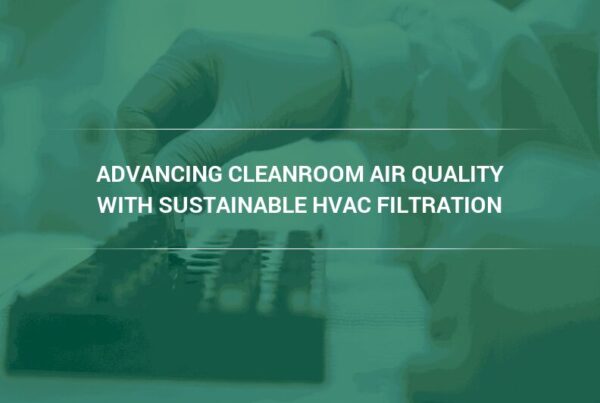A cleanroom is a specially constructed environment designed to maintain low levels of airborne pollutants such as dust, aerosol particles and microbes.
Cleanrooms are commonly used in the manufacture of pharmaceutical and microelectronic products as well as for many types of scientific research and life science industries.
For more than fifty years Camfil has been a leading supplier of air filtration products and services to the Life Science Industry. Today, Camfil is clearly recognized as the leading global air filter supplier to the industry
Cleanrooms are classified at different levels, designated one through nine by the International Organization for Standardization (ISO). Each ISO cleanroom level allows for a certain number of particles of a certain size per cubic meter of air. Higher ISO levels allow for more contaminants in the air, with ISO class 1 being the cleanest and class 9 being the equivalent of natural, unfiltered air.
To illustrate the difference between ISO classifications, the natural air in a typical urban environment contains about 35 million particles that are .5 microns or larger in size, per cubic meter. Air of this quality would be allowed in an ISO class 9 environment. In an ISO class 1 environment, there must be 0 particles of .5 microns or larger and only 12 particles of .3 microns and smaller, per cubic meter. This is, obviously, a tremendous difference. To give you an idea of just how small these particles are, an average human hair has a diameter of about 75 microns. Even something as small as a single red blood cell is about 5 microns in size.
Meeting the various levels of air purity needed for different classes of cleanrooms is achieved through constant filtering of the air that enters and circulates within the area. The cost of moving and filtering the air in the environment is a significant part of the overall costs associated with operating a cleanroom. Design of the air filtration system, as well as the filters that are chosen for use with it, can have a big impact on energy consumption.
Air quality is maintained through the use of high-efficiency particulate air (HEPA) filters and/or ultra-low penetration air (ULPA) filters. Outside air entering the area is, of course, filtered, but recirculated air must be filtered as well to eliminate any contaminants that may have been introduced into the air from within the cleanroom environment.
In order to keep the filtered air clean, strict protocols must be followed. Cleanrooms make use of specialized furniture and alternative versions of common items like pens and pencils to reduce the amount of internally introduced contaminants to the absolute minimum. Personnel working within the clean room might have to do anything from just wearing special shoes to undergoing “air showers” and using full body, air supplied suits depending on the class of cleanroom they work in.
Camfil Products Can Make A Difference
For more than fifty years Camfil has been a leading supplier of air filtration products and services to the Life Science Industry. Today, Camfil is clearly recognized as the leading global air filter supplier to the industry.
Many of our clients have multiple facilities located around the world. Camfil is viewed by many of the largest manufacturers as a partner and is well positioned to support their air filtration needs on a local and global basis.
Major investments have been made in our R&D facilities located around the world to develop products specifically for the Life Science industry. It is common for us to work in close collaboration with our customers to meet, and often exceed, their most demanding air filtration requirements. Camfil air filter products represent the very best in air filtration technology and energy efficiency. We can help you achieve higher levels of air purification, while simultaneously reducing operating costs.
Lynne Laake
Camfil USA Air Filters
T: 888.599.6620,
E:Lynne.Laake@camfil.com
F: Friend Camfil USA on Facebook
T: Follow Camfil USA on Twitter
Y: Watch Camfil Videos on YouTube



